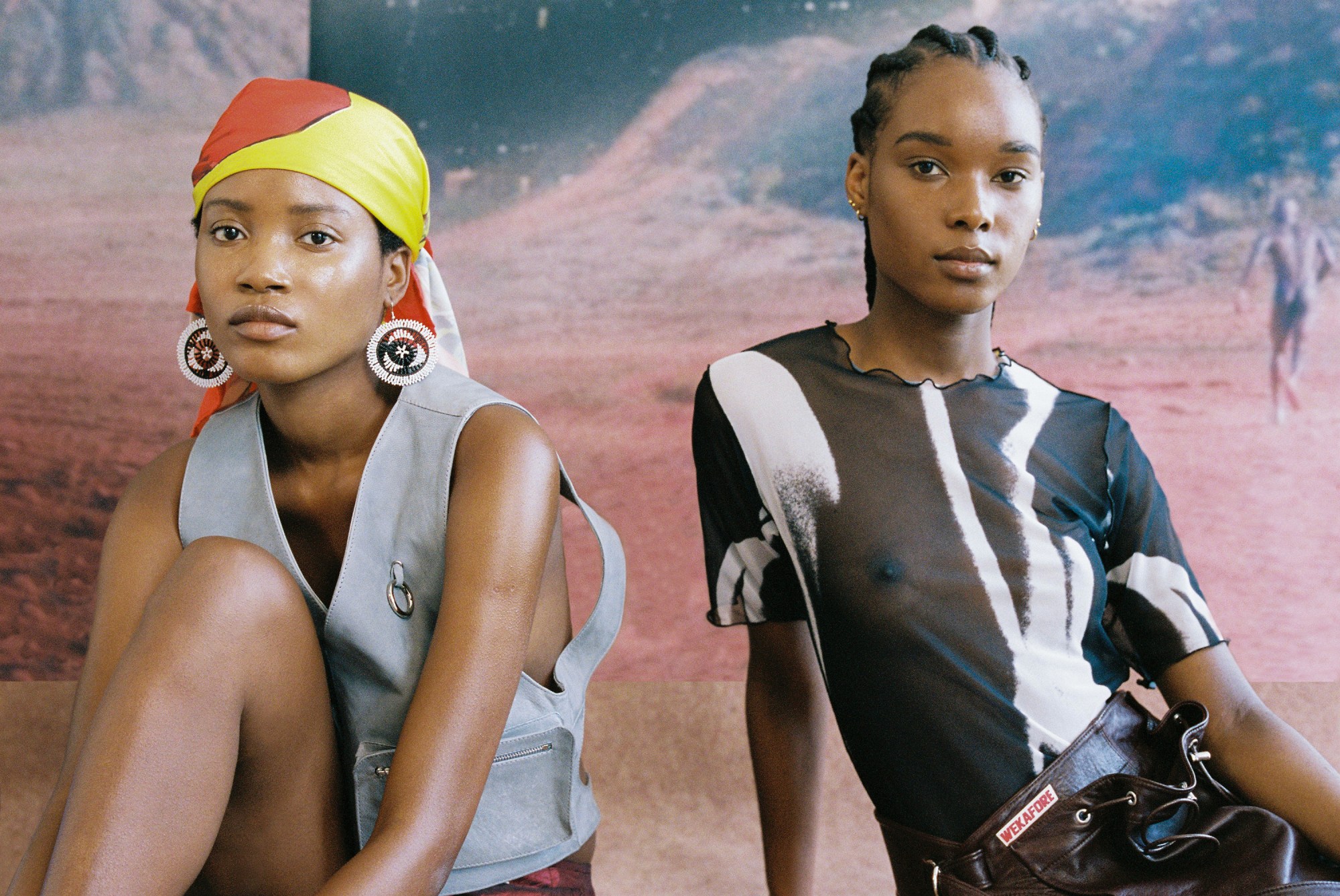Wekaforé Maniu Jibril first started making clothes aged 14. “I was drawing on T-shirts with Sharpies and selling them to my classmates for lunch money,” the designer says. “My mother used to have a small textile factory-workshop, right outside our house. I spent most of my childhood in Lagos helping the workers there.”
At 24, the designs of his namesake brand have developed into something a little more advanced than drawings on a tee — a clever mixture of leather chest rigs, tracksuit trousers and dated African cinematic iconography reimagined into logos printed onto tees and hoodies. But the traces of this lineage are present throughout each piece. It’s “Afro-primitive-futuristic functional-disco activewear”, he says, and it’s inspired by everything from The Nuba tribe of South Sudan, to motherhood and divine femininity, to Fela Kuti. “Lagbaja was also a key influence growing up,” he says, referring to a controversial Nigerian folk musician who, according to legend, has never been seen without his mask, even by his wife. “I didn’t know about designers or luxury brands until I left Nigeria. Where I’m from Dior, Gucci, Louis Vuitton don’t hold the same value, they’re so far away from our reality.”

Leaving Lagos to study at a small design institute in Bilbao, Wekaforé is now based in Barcelona where he runs his label. “Being a designer in Barcelona is calm,” he says of this decision to avoid the more conventional fashion capitals and their overpopulated scenes. “The scene here is still very young so you’re sort of isolated, which is good for me, there’s space to think.”
Back home in Lagos, the challenge instead would be just standing out in Africa’s most populous city. “There are a lot of very successful designers in Lagos. They’re making beautiful traditional clothing for a vast population of people. But there are over 20 million people in Lagos, so being unique and standing out from the crowd is very important. We don’t have an H&M to buy a jacket that another 100,000 have. It’s a beautiful chaos if you look at it for what it is and not in comparison to anything.”
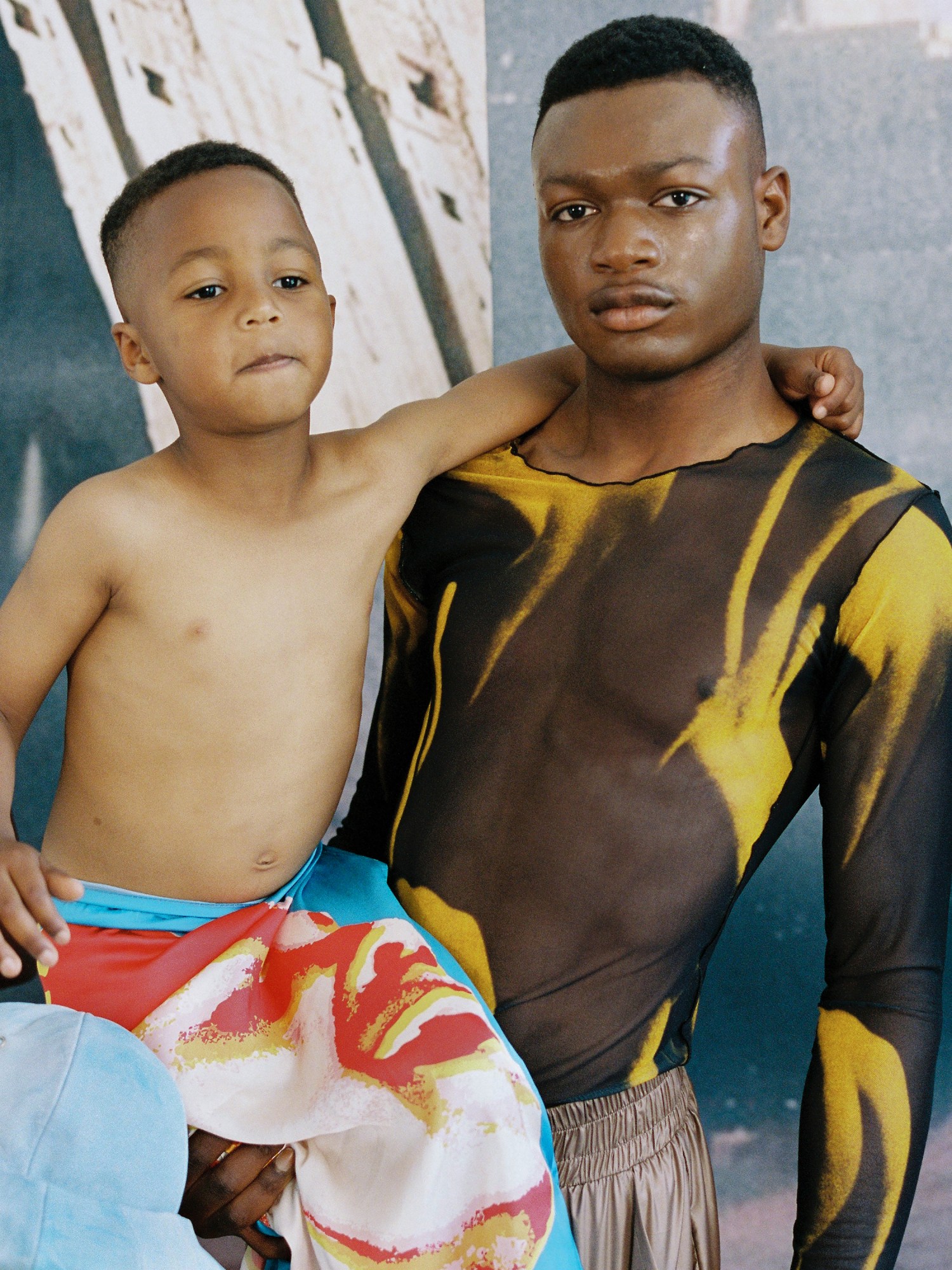
Nothing particularly “frustrates” him about the way the creative scene back in Nigeria right now, but “selfish misrepresentation” of does “irk” him a little. “I see a lot of hype around Nigeria and the Nigerian energy — that we’ve always had — but 80% of the Nigerian-West African population cannot afford, nor have the need to understand the point of, western fashion, so it’s annoying when we speak of African fashion in comparison or derivation of European fashion, or when the top 1% of West Africans who live in privilege use the same people who suffer from the extreme class structure we have as props to propel themselves into ‘stardom’ in Europe.”
Like many young designers plotting the future of their brands, Wekaforé wants to think about the ways in which he can make meaningful change. “I think the right question now is how much good do I want to bring into my world? How much do I wish to sacrifice for the greater good?” he says. “The Wekaforé brand is at the forefront of igniting the new African consciousness. I’m looking to collaborate with bigger brands to propel wider-scale initiatives that create real empowerment.” But in order to do so, a different mindset towards expansion must be considered. “I think we need to re-think what ‘big’ means, what ‘growth’ means, where are we growing to and who are we ‘big’ to or for. Just as the Western idea of fashion doesn’t hold the same importance to me, neither does the Western idea of success.”
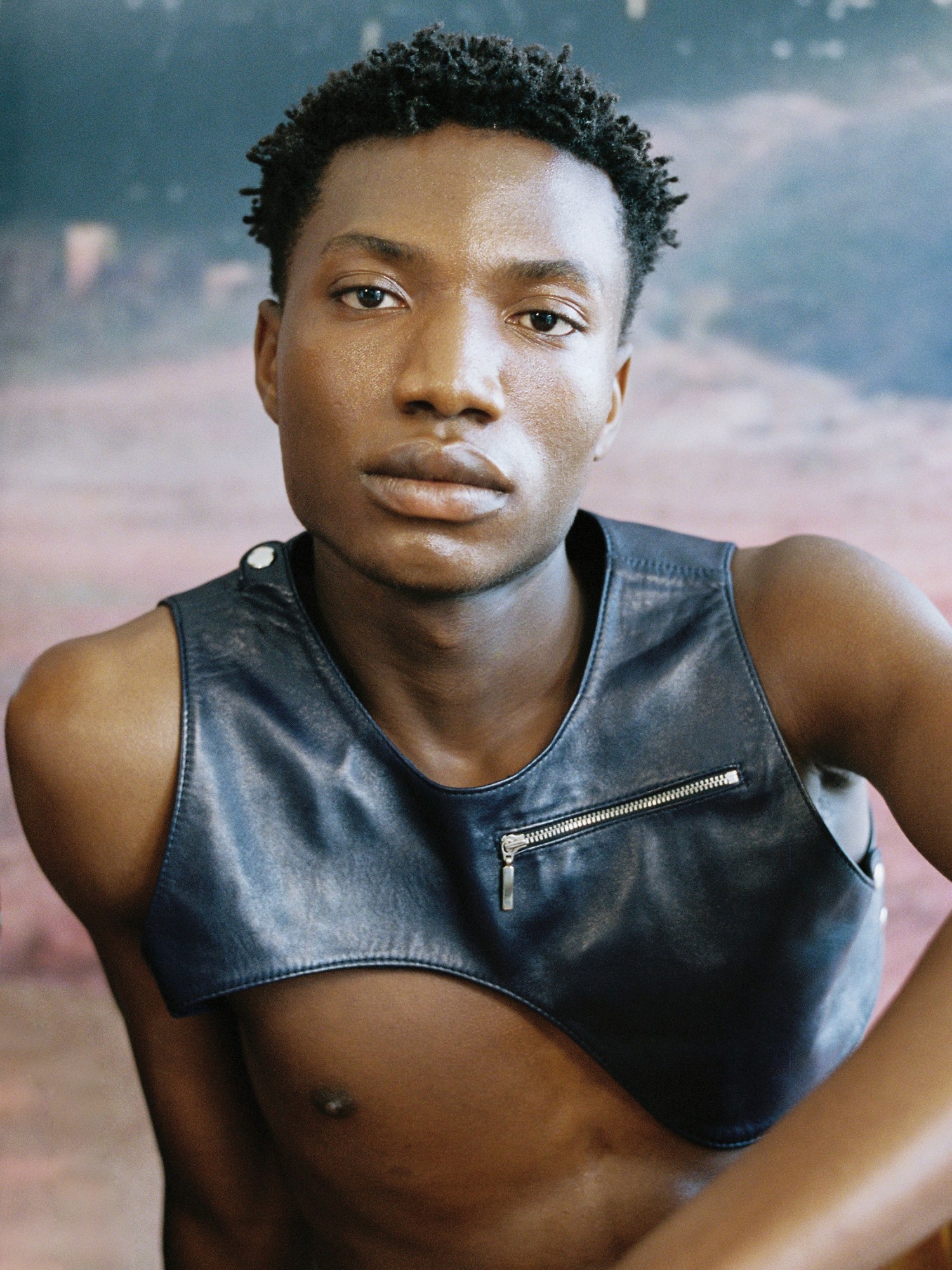
Outside of designing, Wekaforé fronts a musical project, Egosex, and has a hand in popular night Voodoo Club — billed as a celebration of a “curated contemporary African rave experience in the heart of Barcelona” playing 70s Afro-funk and disco, Afrobeat and Afrohouse. “I am looking into introducing more into the Wekafore universe, the music, Egosex, Voodoo Club, the community, the social initiatives, the Nouvelle Afrique,” he says. “I want to move as far as possible away from waste, only the necessary, no excess and no destruction. I have the ability to translate my designs and the brand’s aesthetic into many different formats and channels.”
For his latest campaign, Wekaforé captured all the faces that make up this community of friends and collaborators in Barcelona. “Every Wekafore campaign is different but the same. All the models are my friends, people from the Voodoo Club or people I meet on the street. All my campaigns have similar hues of family, friendship, origins, neo-blackness, all products of my childhood and my way of life.” Including sheer tops, high-waisted elasticated tracksuit trousers, leather vests and leggings, the collection feels modern and global yet celebratory of all of the nostalgic West African influences previously mentioned.
It’s a hard job, running a label, but it’s not one without its payoffs. “Every moment that I get a message from a customer or an admirer telling me how much the brand inspires them, it makes everything worthwhile.”
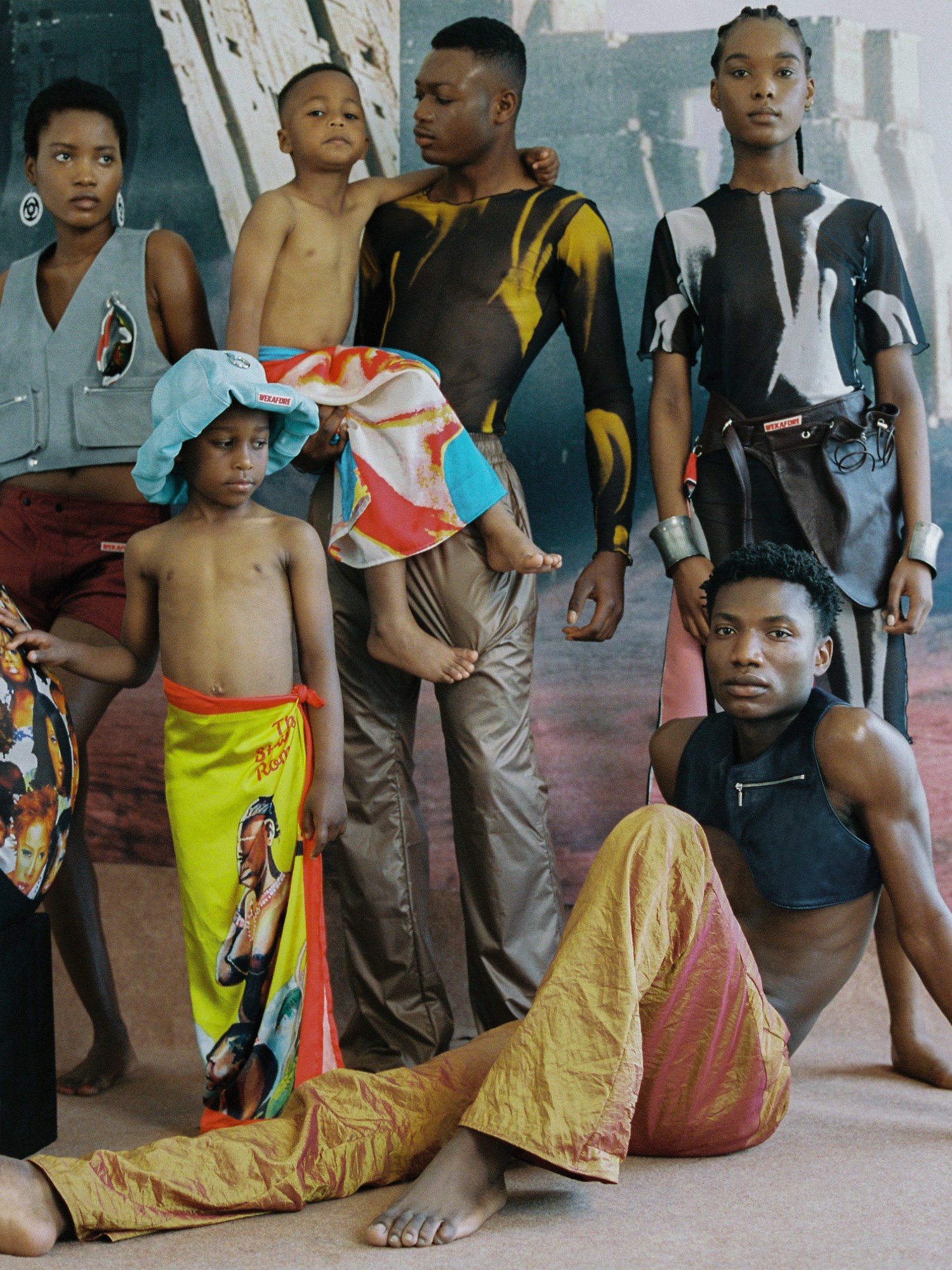
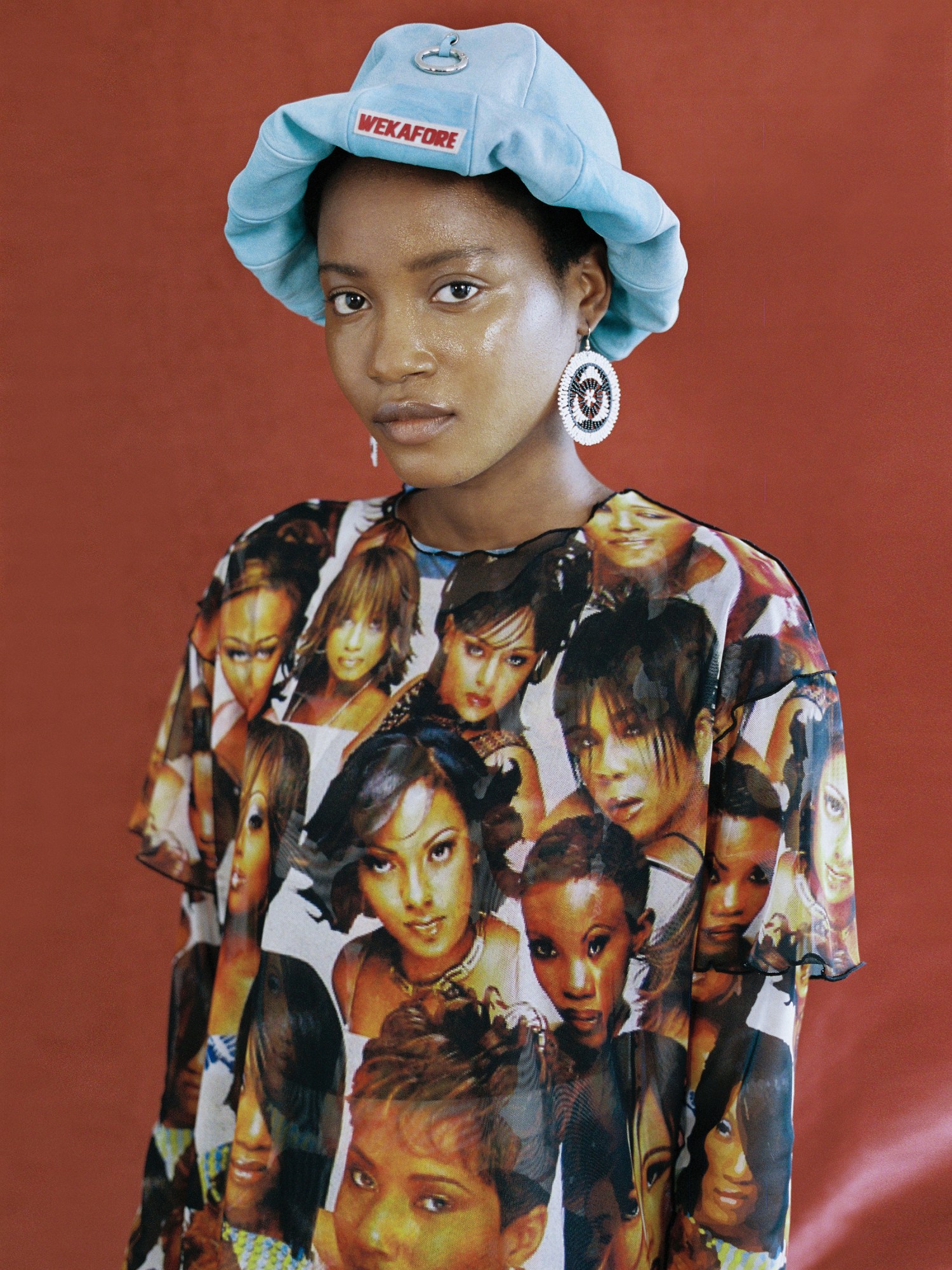
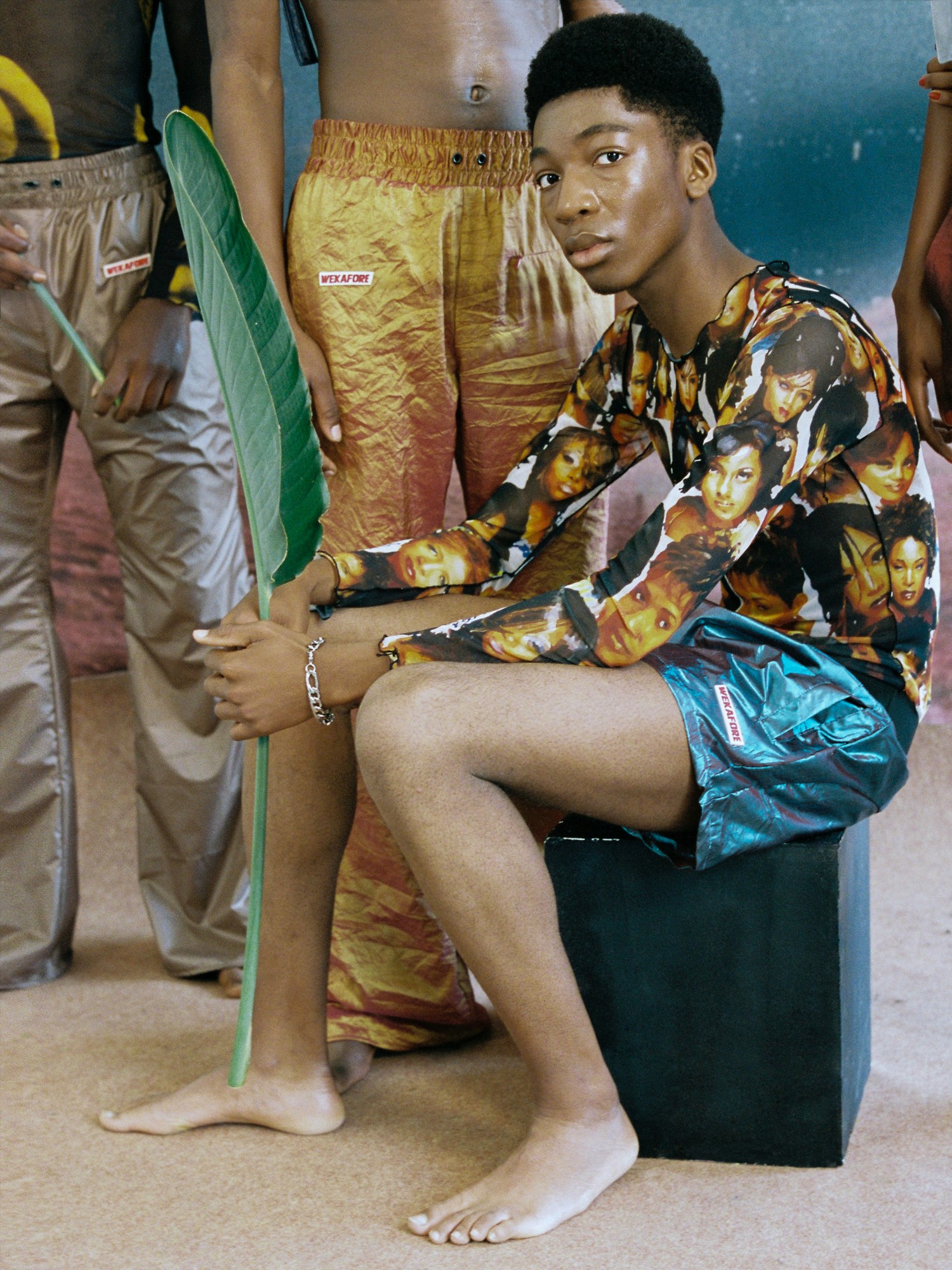
Credits
Photography Viridiana Morandini
Styling Rebeca Sueiro
Make up Regina Khanipova
Set Design Deborah Rodam
Produced Arto Management & Uno Models
